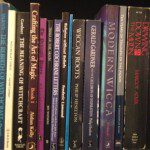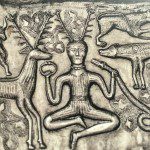 A few months ago a friend of mine posted a few pictures from Llewellyn’s Steampunk Tarot. Much to his surprise those pictures set off a firestorm as people felt the need to comment on them. Many of the remarks were negative, somewhere along the line of “how dare anyone mess with the sanctity of tarot!” Of course if you know anything about the real history of tarot cards you know that the images on the cards were in flux for centuries with many decks having different numbers of both major and minor arcana cards. If you’ve never seen the Llewellyn Steampunk Deck (conceived by Barbara Moore and illustrated by Aly Fell) you should give them a look. The images are absolutely gorgeous and stir the imagination, which is what good tarot cards should do.
A few months ago a friend of mine posted a few pictures from Llewellyn’s Steampunk Tarot. Much to his surprise those pictures set off a firestorm as people felt the need to comment on them. Many of the remarks were negative, somewhere along the line of “how dare anyone mess with the sanctity of tarot!” Of course if you know anything about the real history of tarot cards you know that the images on the cards were in flux for centuries with many decks having different numbers of both major and minor arcana cards. If you’ve never seen the Llewellyn Steampunk Deck (conceived by Barbara Moore and illustrated by Aly Fell) you should give them a look. The images are absolutely gorgeous and stir the imagination, which is what good tarot cards should do.
When I first ran into the Moore and Fell deck I knew that a Steampunk Pagan Book would probably be close behind it, and low and behold it showed up last February. When I took my first look at Gypsey Elaine Teague’s Steampunk Magic (Red Wheel/Weiser) I did a little bit of scoffing, but then I had to correct myself. Ritual is a lot like tarot, it should stir the imagination, and even more importantly it should probably be fun. If you aren’t enjoying ritual you are probably doing it wrong, and the rituals (and magic) in Steampunk Magic are full of fun. I’m sure there are some people out there who think weaving fantasy elements into ritual is offensive or blasphemous but I’m not one of them. (Teague also does a nice job of avoiding such controversies by keeping “religion” out of SPM, there are no sabbat rituals here or devotions to deity.)
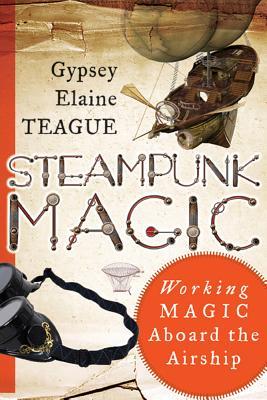 I’m not a Steampunk aficionado so some of this book was lost on me, but I found a lot to enjoy. The prose in Teague’s rituals is effective and often eloquent, and I tend to be picky with how rituals are worded. In addition to the rituals there are some solid and imaginative spells. For the Steampunk novice there are also a lot of pictures and illustrations so everything makes a degree of sense. I will admit that Teague’s inclusion of an absinthe ritual (basically using it as ale in Cakes and Ale) helped sell me on this book. I’m easy that way.
I’m not a Steampunk aficionado so some of this book was lost on me, but I found a lot to enjoy. The prose in Teague’s rituals is effective and often eloquent, and I tend to be picky with how rituals are worded. In addition to the rituals there are some solid and imaginative spells. For the Steampunk novice there are also a lot of pictures and illustrations so everything makes a degree of sense. I will admit that Teague’s inclusion of an absinthe ritual (basically using it as ale in Cakes and Ale) helped sell me on this book. I’m easy that way.
While I thought this book was a lot of fun, I do have a few quibbles. While not using the terms “Priestess” and “Priest” was probably a conscious decision, if I were to use Teague’s rituals in a public setting I’d probably refrain from calling myself “Captain” or “Commander.” I’ll admit to the lexicon making me giggle a bit, but that could be because I’m an outsider.
I also felt as if there was a lot of “dead space” in Steampunk Magic. In the print version there are some huge margins (the bottom of each page has about one and a half to two inches of nothing) and I initially thought the review copy I was given was an early proof and not the “for sale” version. Whoever laid this book out for Red Wheel had to do some serious work to get the page count up to 213. Perhaps instead of stretching the page count out, an editor could have noticed the misattribution of the book The War of the Worlds to Jules Verne instead of H.G. Wells. All in all though, I had a good time with it, and I certainly recommend it for anyone interested in Steampunk or imaginative 19th Century-inspired magick work.
Last March the Patheos Book Club featured T. Thorn Coyle’s Make Magic of Your Life (Red Wheel/Weiser). A lot of the writers here at Patheos Pagan really enjoyed Make Magic; Crystal Blanton, John Beckett, and P. Sufenas Virius Lupus all had good things to say about it. Their positive reactions caused me to sit on my review for the last two months because I just didn’t feel as strongly about it as they did.
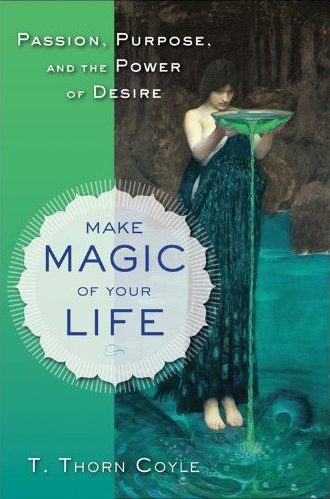 For the record I absolutely love T. Thorn Coyle. She’s an amazing teacher and her rituals at public gatherings sizzle with power and energy. Evolutionary Witchcraft, Thorn’s first book, is great and should be included on any comprehensive “101” type of list. All of those feelings (along with the glowing reviews from my respected colleagues here) made this book hard for me to review.
For the record I absolutely love T. Thorn Coyle. She’s an amazing teacher and her rituals at public gatherings sizzle with power and energy. Evolutionary Witchcraft, Thorn’s first book, is great and should be included on any comprehensive “101” type of list. All of those feelings (along with the glowing reviews from my respected colleagues here) made this book hard for me to review.
I think some of my problems with Make Magic are due to my current circumstances. The last year or so I’ve been absolutely glowing. My life is great and full of magick; I know where I want to go, and have a pretty good plan on how to get there. Make Magic of Your Life is about getting to a more positive place and finding the things that are going to make one fulfilled. There are certainly readers out there who need the kind of positive guidance provided by Thorn in this book, I just didn’t feel like I was one of them.
Coyle says a lot of practical things in her latest book, but her best insights always feel as if they are surrounded by a lot of superfluous prose. Yes people need to listen more than they do, but I don’t need to be hit over the head with the idea over and over again. If the ideas in Make Magic were pancakes I’d say they all came with way too much syrup and butter. There are also quotes from famous people sprinkled throughout the text along with some reflections from a collection of authors and activists referred to as “The Wise Council.” Both of those things came across as padding to me and I felt as if they detracted from the book.
Gods I feel like a jerk for not liking this book, but I just couldn’t get into it. I’m an earthy drink deeply from the cup of life type of Pagan and had a lot of trouble relating to concepts like “God hirself.” I understand the desire to treat deity in a gender-neutral kind of way, but it felt like an attempt to pander to a Non-Pagan more New Agey type of audience. I get the desire to write a book that transcends genres, but in doing so Jason the Pagan was a little bit lost and felt a little bit neglected. There are good thoughts and ideas in Make Magic, and her use of Eliphas Levi is clever, but it just didn’t work for me. Read the other reviews I’ve linked to though, because as I said, I don’t think this book was written for me.
Quick Hits
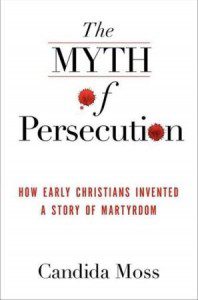 Every year around Easter I try to read one book about Christianity. This year I ended up reading (devouring might be a better word) The Myth of Persecution: How Early Christians Invented a Story of Martyrdom by Candida Moss. I’ve long known that much of the martyr mythology embraced by many Christians is nonsense, but Moss lays those truths out with precision and clarity. If you are interested in a more honest history of Christianity in the Second through Fourth Centuries CE you’ll want to pick this book up.
Every year around Easter I try to read one book about Christianity. This year I ended up reading (devouring might be a better word) The Myth of Persecution: How Early Christians Invented a Story of Martyrdom by Candida Moss. I’ve long known that much of the martyr mythology embraced by many Christians is nonsense, but Moss lays those truths out with precision and clarity. If you are interested in a more honest history of Christianity in the Second through Fourth Centuries CE you’ll want to pick this book up.
When an academic writes a book for a lay audience tone can often be a problem and it is here. Moss often treats her readers with a bit of contempt. I felt like she was intentionally trying to “dumb things down,” scared that those of us without PHd’s would be unable to keep up if she didn’t. It’s a tone that comes up several times in Myth, and if Moss is going to continue to write for a general audience I hope she overcomes the ivory tower syndrome. Even with the tone problems, there’s a lot of great information here and I whole heartedly recommend Myth for that.
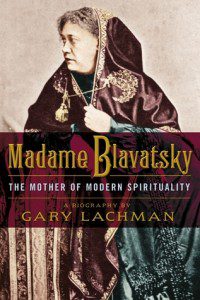 Helena Blavatsky is one of the most interesting and intriguing spiritual/religious figures of the last 200 years, but she’s been relegated mostly to the margins of history. Was she a complete fraud? Delusional? An under-appreciated genius? Perhaps she was a combination of all three?
Helena Blavatsky is one of the most interesting and intriguing spiritual/religious figures of the last 200 years, but she’s been relegated mostly to the margins of history. Was she a complete fraud? Delusional? An under-appreciated genius? Perhaps she was a combination of all three?
Gary Lachman’s Madame Blavatsky: The Mother of Modern Spirituality doesn’t really answer the question, but it’s a good introduction to Blavatsky. Lachman (a former member of Blondie) seems mostly sympathetic to my favorite Russian enigma, which is both good and bad. No matter how one feels about Blavatsky she was a fascinating character and shouldn’t be dismissed lightly, but I would have liked a little bit more skepticism on Lachman’s part. It’s a quick read and recommended for anyone who just wants to know a little bit more about H.P.
That’s it for me, I’ve got more books to read.



